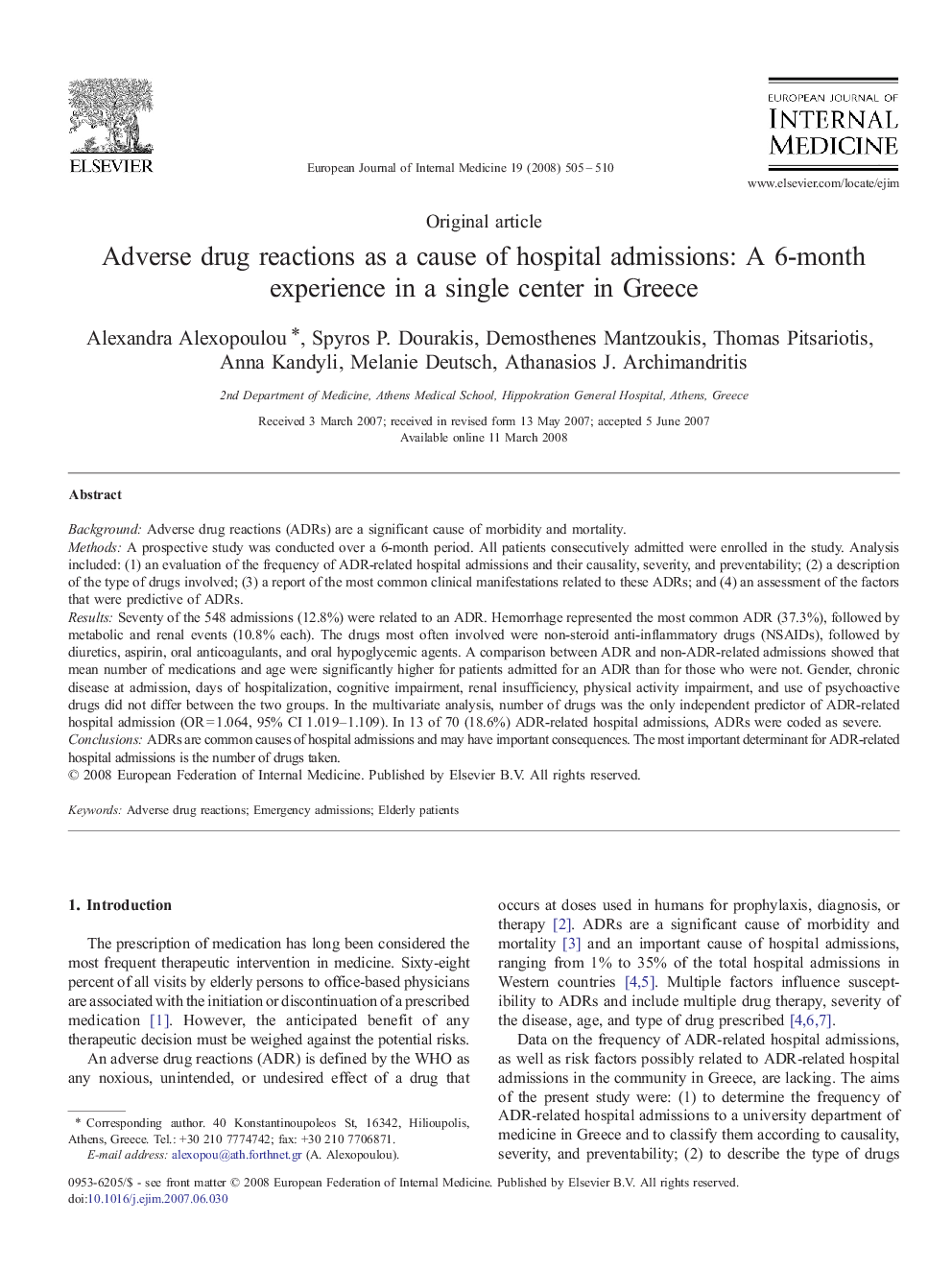| Article ID | Journal | Published Year | Pages | File Type |
|---|---|---|---|---|
| 3467859 | European Journal of Internal Medicine | 2008 | 6 Pages |
BackgroundAdverse drug reactions (ADRs) are a significant cause of morbidity and mortality.MethodsA prospective study was conducted over a 6-month period. All patients consecutively admitted were enrolled in the study. Analysis included: (1) an evaluation of the frequency of ADR-related hospital admissions and their causality, severity, and preventability; (2) a description of the type of drugs involved; (3) a report of the most common clinical manifestations related to these ADRs; and (4) an assessment of the factors that were predictive of ADRs.ResultsSeventy of the 548 admissions (12.8%) were related to an ADR. Hemorrhage represented the most common ADR (37.3%), followed by metabolic and renal events (10.8% each). The drugs most often involved were non-steroid anti-inflammatory drugs (NSAIDs), followed by diuretics, aspirin, oral anticoagulants, and oral hypoglycemic agents. A comparison between ADR and non-ADR-related admissions showed that mean number of medications and age were significantly higher for patients admitted for an ADR than for those who were not. Gender, chronic disease at admission, days of hospitalization, cognitive impairment, renal insufficiency, physical activity impairment, and use of psychoactive drugs did not differ between the two groups. In the multivariate analysis, number of drugs was the only independent predictor of ADR-related hospital admission (OR = 1.064, 95% CI 1.019–1.109). In 13 of 70 (18.6%) ADR-related hospital admissions, ADRs were coded as severe.ConclusionsADRs are common causes of hospital admissions and may have important consequences. The most important determinant for ADR-related hospital admissions is the number of drugs taken.
